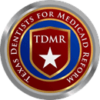Why OIG Did This Review
Outlier claim payments are based on hospital cost reports from the latest cost-reporting period for which the cost report is either settled as final or tentatively settled. The Centers for Medicare & Medicaid Services (CMS) requires its Medicare administrative contractors to reconcile outlier payments by using information from the updated current cost-reporting period, but only if the cost report meets the following criteria: the actual cost-to-charge ratio (CCR) is found to be plus or minus 10 percentage points from the CCR applied during the payment period (10-percentage-point threshold), and the outlier payments in that cost reporting period exceed $500,000.
From fiscal years 2011 through 2014 (4-year period), CMS made more than $18 billion in outlier payments to 3,336 hospitals that submitted 13,344 cost reports (3,336 × 4 cost reports). Of these hospitals, 972 submitted 3,888 cost reports that had outlier payments exceeding $500,000 for each year, and 3,863 of those cost reports with outlier payments, totaling $14.7 billion, did not meet the 10-percentage-point threshold for reconciliation.
Our objective was to determine whether CMS paid hospitals more for Medicare outlier payments than the hospitals would have been paid if their outlier payments had been reconciled.
How OIG Did This Review
We used the claims data, information from CMS, and cost reports for a 4-year period to recalculate outlier payments based on the actual CCRs of 60 hospitals that had received $3.5 billion in outlier payments. We also analyzed CCRs of 912 hospitals that received $11.2 billion in outlier payments. We estimated the potential costs to Medicare Administrative Contractors (MACs), as well as the potential return on investment, of reconciling the 236 cost reports that did not meet the 10-percentage-point threshold.
What OIG Found
From fiscal years 2011 through 2014, CMS paid the 60 hospitals a net of $502 million more in outlier payments than the hospitals would have been paid if their outlier payments had been reconciled. (We refer to this net amount as excessive outlier payments.) Specifically, CMS paid 53 hospitals $541 million more than they would have been paid and 7 hospitals $39 million less than they would have been paid over the 4-year period. CMS did not detect or recover these excessive outlier payments because the 236 associated cost reports did not meet the 10-percentage-point threshold for reconciliation.
The cost reports associated with these outlier payments did not meet CMS’s 10-percentage-point threshold for reconciliation because when hospitals increased their charges at a rate higher than the rate of cost increases, this usually resulted in only a small percentage point change in their CCRs. Of the 236 cost reports of 60 hospitals that we reconciled, 216 (92 percent) had a change of less than 5 percentage points in their CCRs. In addition, 34 of the 60 hospitals received excessive outlier payments each of the 4 years in our 4-year period. Of the 3,627 cost reports that we did not reconcile but for which we determined the differences between CCRs used at the time of claim payments and the actual CCRs, 3,417 (94 percent) had a change of less than 5 percentage points in their CCRs. CMS set the 10-percentage point threshold, because it believed that the threshold would appropriately capture those hospitals whose outlier payments would be substantially inaccurate when the hospital uses the ratio from the contemporaneous cost-reporting period. Based on the estimated time and costs that we received from 7 MACs, we estimate that the administrative burden on the MACs to reconcile the 236 cost reports that did not meet the 10-percentage-point threshold would be a minimum of $47,200 and a maximum of $1.7 million for 4 years, or a minimum of $11,800 and a maximum of $425,000 per year.
What OIG Recommends and Auditee Comments
We recommend that CMS require reconciliation of all hospital cost reports with outlier payments during a cost-reporting period. If this had been in effect for the 60 hospitals in our review, CMS would have saved approximately $125 million per year. In written comments on our draft report, CMS concurred with our recommendation and stated that it is evaluating the current outlier reconciliation criteria and will consider whether to propose any appropriate modifications to the outlier reconciliation policy in future rule making.

